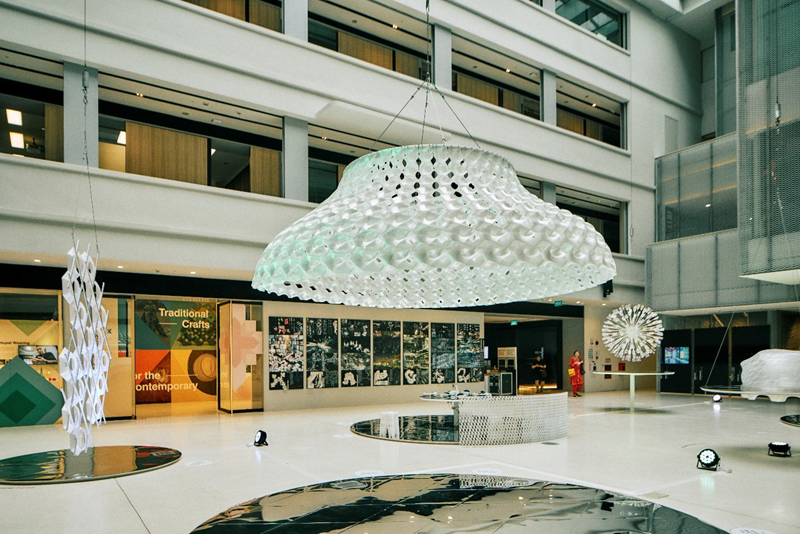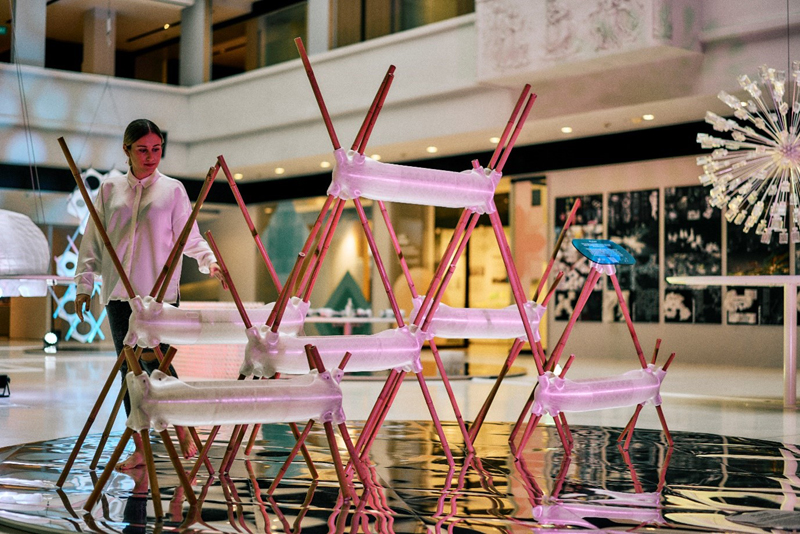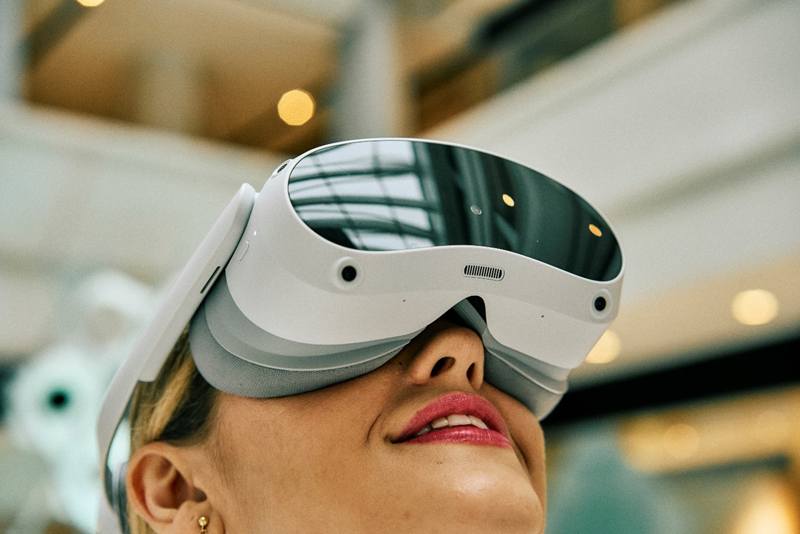Sustainability in Design – How This Art Exhibition is Driving Home 3R Principles
15 FEB 2023 | by Nicholas Lim

(Photo credit: Caleb Ming, Surround)
Art and sustainability may seem like two separate ideas, but in truth, they are more connected than you realise. Art plays a key role in raising awareness of social issues, evoking thought, and spurring action. One such exhibition is doing just that, driving the 3Rs (Reduce, Reuse, Recycle) message, and looking to inspire Singaporeans to think about the value of waste.
Circular Futures: Next Gen explores the future of sustainability, and the potential of transforming plastic waste into something practical, yet stunning.
This exhibition is a collaboration between curative studio Artacia Art, multidisciplinary research laboratory AIRLAB and research agency formAxioms@SUTD, and aims to create awareness of the enormous potential of upcycling plastic waste using technology. Partnering with RecycleNSave, a joint initiative by the National Environment Agency and F&N Foods, the plastic waste collected was used to create the beautiful designs on display. Artacia Art founder Avantika Malhotra says, “We wanted to create something beautiful and functional, that would generate awareness about plastic waste and at the same time encourage people to continue recycling.”

(Photo credit: Caleb Ming, Surround)
This exhibition also embodies the concept of reducing waste. Utilising cutting age 3D printing technology, also known as Additive Manufacturing, the exhibits on show are as green as they can get. AIRLABs Director Carlos Banon says, “Unlike traditional manufacturing methods, where 50-70% of the material is used to produce a product while the remaining percentage is waste, the additive process allows designers to precisely place the material only where it is needed.”
On top of this, much of the art pieces on display are also made from sustainable materials. Single-use PET bottles were melted down into liquid form, and used to make filament, or fibres to be used as threads, with the use of 3D printing technology. Mr Banon further details the other eco-friendly materials used, “The 3D printed planters, for instance, strengthened with bamboo, a material that's both strong and eco-conscious. Or the chandelier, made from recycled aluminum, makes a statement while adding strength.” The idea of using sustainable materials is gaining traction in the world of product development, such as the products under the Singapore Green Labelling Scheme, which comply with a set of guidelines to ensure minimal impact on the environment.

(Photo credit: Caleb Ming, Surround)
Beyond beauty in design, the exhibition also looks at a Singapore of the future, should it succumb to climate change. Students at formAxioms@SUTD developed potential hybrid oceanic housing, for a future where Singapore may be underwater due to rising sea levels.
Circular Futures: Next Gen is the latest example of how art can be used as an inspirational tool to approach the topic of sustainability. In particular, it tells us that waste does not always have to end up in our landfills. As Mr Banon says, “Our goal is to inspire others to embrace a circular economy, where waste becomes a valuable resource.”
The exhibition is open until 9 April 2023, at the National Design Centre, 111 Middle Road.
If you’d like to know more about how you or your organisation can reduce your impact on the environment, contact us at info@sec.org.sg.
Nicholas Lim is a member of the Singapore Environmental Council’s marketing team, specialising in digital and social media content.